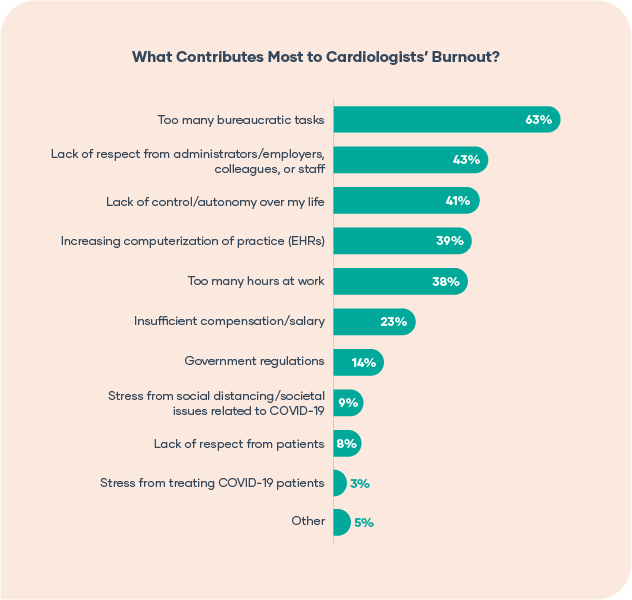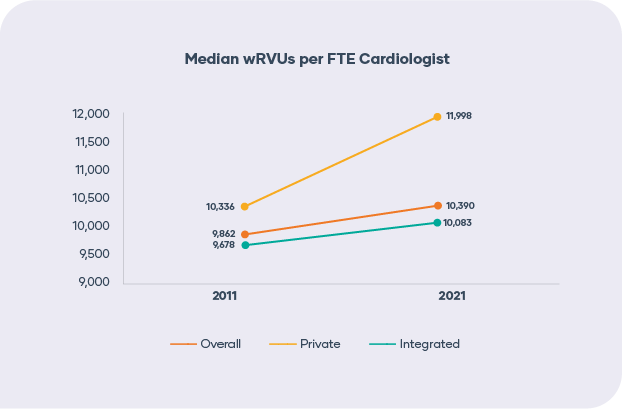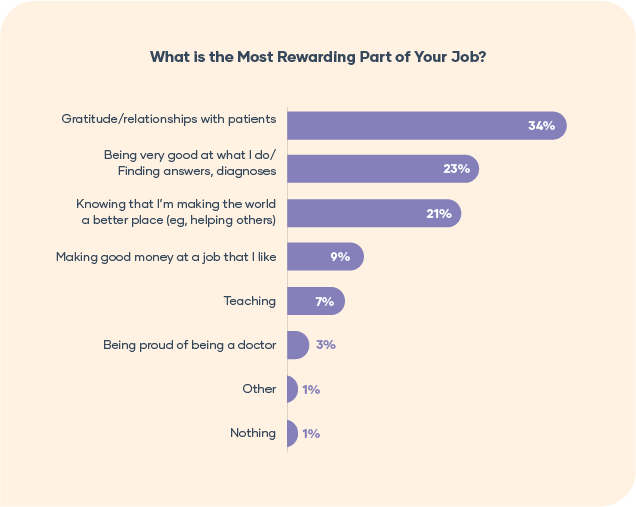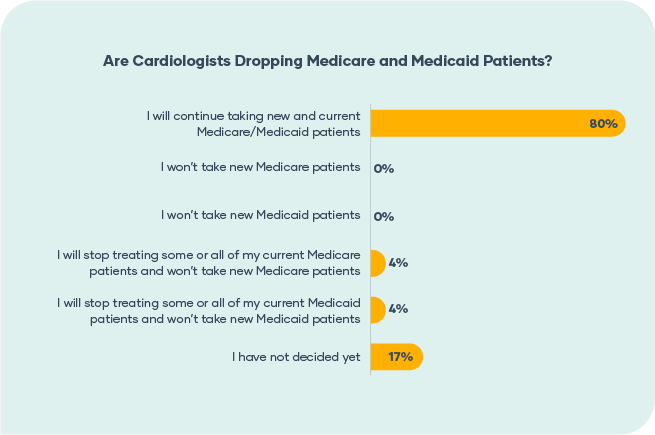Cardiology Advertising: Digital Marketing to Cardiologists
Competition for attention when marketing to healthcare provides (HCPs) is fierce. Big pharma companies have astronomical budgets, making it easy for them to outbid and outspend any competition. For companies whose pockets may not be quite so deep, the key to successful HCP marketing is highly specific audience targeting and messaging. In the case of cardiology advertising, this means going beyond traditional demographic data. You’ll have to dig deep in cardiology-specific segmentation, targeting, and metrics to make an impact. Here’s how we do it.
Want more details on everything it takes to market to HCPs (including cardiologists)?
Sign up to receive our upcoming eBook
Understanding the Cardiology Advertising Market
First, you have to understand the size and specifics of the cardiology market as a whole to determine success.
Market Size and Growth
The cardiology market is experiencing continued growth regardless of market segment. This is no surprise as cardiology is a complicated field that is impacted by numerous internal and external factors.
The global cardiology market is expected to grow at a CAGR of 8.8% from 2020 to 2027 and reach a market value of $24.3 billion by 2027.
The global cardiovascular devices market size is growing even faster and is expected to reach $86.27 billion by 2028.
According to MedAxiom, there are five main factors that are impacting cardiology supply and demand:
- Aging and growing population
- Prevalence of chronic diseases
- Changes in cardiology testing & procedure utilization
- Aging cardiology workforce
- Projected primary care shortages
The largest factors impacting cardiology market growth are the increased prevalence of cardiovascular diseases and an aging population.
Total Addressable Market
To define campaign success you must start by determining campaign potential. If your cardiology advertising goal is to get 50,000 cardiologist leads, but there aren’t that many available in the market, then it will be impossible to achieve that goal.
Like other specialties, it’s important to remember just how small the cardiology community is. Layer on other campaign elements like geotargeting or ownership status, and you’re likely dealing with a very modest total addressable market.
There are approximately 33,700 active cardiologists in the US.
Traditional Demographic Information
Compared to B2C marketing, or even other kinds of B2B marketing, traditional demographic data tends to be less important in cardiology advertising. However, depending on your product, demographic information can be used to make some inferences about your audience or to help tighten audience segments for smaller advertising budgets. And cardiologists aren’t just doctors. They’re people too. So, it’s helpful to think about their circumstances and demographic distribution.
Age
Beyond understanding the total addressable market for cardiology advertising, you should also consider your specific product or solution and who can buy it (or would be authorized to buy it). Using age brackets can help you focus on your most valuable prospects—especially when it comes to key HCP decision-makers.
Nearly 63% of cardiovascular disease specialists are over the age of 55 and 37% are under the age of 55 according to the AAMC.
For example, if you’re marketing a billing system for cardiologists, you’re likely going to be targeting practice owners. Unfortunately, “cardiology practice owner” is not a standard audience target in most marketing platforms. To reach this hyper-specific audience, you’ll need to use the platform tools to target “cardiologists” and then layer on demographic specifics to target your ideal prospects.
So, considering it takes 14 years or more to become a cardiologist, and most docs will work for a few years to save up money before opening a private practice, it’s fair to assume that you can limit your target audience to those 35 and above. Then consider the current economy and other healthcare market trends and you can bump the targeting range to 45 and above, especially since, compared to previous generations, Millennial med school grads were more likely to seek employment over opening up their own practice.
In cardiology, it is particularly important to look at age relative to the shifts in the coming workforce. According to the 2022 MedAxiom compensation survey, there are currently about 32,000 practicing cardiologists, and more than 25% of cardiologists are over the age of 61 (approx. 8,480). There are about 3,745 cardiologist fellows with about 1,450 entering the workforce. Based on this data, the cardiology market will be losing around 500 cardiologists per year.
The cardiology workforce is projected to lose 500 cardiologists per year.
Location
Be careful when narrowing down your cardiology advertising campaigns based on location, because the resulting addressable market likely won’t meet the required minimums for many advertising platforms. However, depending on your product, you can use this information for highly specialized campaigns based on:
- Completion deadlines for CME requirements
- Prevalence of Medicare, Medicaid, or specific private payers
- Enrollment dates for specific programs
Similar to other specialties, cardiologists tend to flock toward larger metro areas, creating significantly more density in these areas. However, this tends to negatively impact rural areas, which often have healthcare access issues already. According to a 2013 study, the density of cardiologists varies substantially across regions of the United States, from 12 to 225 per 100,000 Medicare beneficiaries. Nearly 50% of cardiologists are concentrated in regions that contain only 25% of the Medicare population, and 60% of this population has access to only 38% of cardiologists. This regional density of cardiologist was directly tied to the rates of mortality for heart attack and heart failure. In particular, rural regions, regions in the Midwest, and regions with lower socioeconomic status have a lower density of cardiologists, resulting in worse outcomes.
Gender
Gender is probably the least used piece of traditional demographic data in cardiology advertising campaigns. However, this is a common demographic used in traditional marketing and advertising, so if you’re working with a team that has a more traditional background, this may be something they want to know.
Cardiovascular Disease Specialist Gender Breakdown (2019) |
||
| Gender | Number of Cardiologists | % of Workforce |
| Male | 19,146 | 85% |
| Female | 3,356 | 15% |
| Total | 22,502 | 100% |
It is well known that cardiology is not a particularly diverse specialty. Overall, women are underrepresented but are disproportionality represented in pediatric cardiology residency positions. The representation of women decreases from medical school, to residency, to cardiology fellowship (known as the residency to fellowship cliff). It then drops further from fellowship to subspecialty fellowship (known as the second cliff). It then drops even further in regard to the inclusion or appointment of women in leadership positions (known as the leaky pipeline). Ultimately, while there is almost gender parity in internal medicine residency training, there is a significant lack of women in cardiology fellowships.
Life Circumstances
Cardiologists are of course doctors, but they are people too. Understanding their personal circumstances can give you some insight into how they behave and where their top concerns within their practice or profession might be.
According to Medscape, while general happiness of cardiologists outside of work has decreased post pandemic, this has been consistent across the entire healthcare industry. However, they come in at the mid-range when it comes to burnout and are aligned with other physicians when it comes to the tasks that contribute to burnout:

(Source: Medscape, 2022)
Given changes in the healthcare environment due to COVID, especially the great resignation in the healthcare field, it’s also no surprise that cardiovascular healthcare providers are working harder. According to MedAxiom, production, as measured by work relative value units (wRVUs), has shifted in the last 10 years. Private cardiologists have pushed per-FTE (full time employee) production up 16% since 2011, while integrated cardiologists have expanded by 4%. In conjunction, the number of new patient visits and consults has increased 25%, and advances in new imaging techniques supported a 311% increase in the median advanced imaging volume per FTE cardiologist.

(Source: MedAxiom, 2022)
On average, cardiologists are in the top 3 earners, bringing in an average of $490k per year, which is about a 7% increase compared to 2021. This is about 120k more per year than other physician specialties, and cardiologists have seen a 30% increase in salaries since 2015 as the cost of living and inflation has continued to rise across the US.
While this increase is substantial, in general, cardiologist salaries have not kept up with inflation, according to the consumer price index, which has increased 2.36% per year over the past decade. Therefore, according to data from MedAxiom, the “average” integrated physician earning $549,999 in 2011 would need to top $695,000 in total compensation in 2021 to keep pace with inflation.

(Source: MedAxiom, 2022)
Cardiologists tend to fall in the middle when it comes to feeling fairly compensated. When it comes to competition, nonphysician practitioners were noted as the largest perceived threat to cardiologists; however, the largest threat to compensation was due to changes caused by COVID-19 (job loss, reduced hours, etc).
On average, cardiologists earn $490k per year.
Cardiologists came out at the top in terms of the specialty that would choose medicine again (81%), and 88% percent would choose cardiology again. While these numbers are on the higher side of specialties overall, they are slightly lower than in previous years. Given the nature of their jobs, cardiologists find working with patients the most rewarding part of their jobs along with:

(Source: Medscape, 2022)
Cardiology Targeting Criteria
Layering demographic data with cardiology advertising specifics is the key to successful HCP marketing campaigns. It’s these details that will help you target the right cardiology prospects without wasting precious advertising budget.
Practice Setting
Practice setting is one of the most important slices within any HCP specialty. Do the physicians spend their time in a small office . . . or do they work in a giant hospital? Or some combination? The vast majority of cardiologists are employed within a facility or integrated healthcare setting. However, fewer private practices means less direct influence over purchasing decisions and can make cardiologists harder to reach.

(Source: MedAxiom, 2022)
Healthcare is trending toward more employed physicians versus practice owners—and cardiology is a prime example of this trend.
Payment Models and Public Programs
Medicaid and Medicare Acceptance
Like any profession, cardiologists want to get paid. Their patients don’t (and often can’t) pay for treatments out of pocket. The reimbursability of your product or solution could be a make-or-break component for getting the sale.

(Source: Medscape, 2022)
These trends are overall consistent with the previous year’s findings. However, throughout the healthcare industry, some physicians have decided to opt out of accepting Medicare patients due to low reimbursements, and the issue is even worse with Medicaid. Other docs have cited an increase in billing issues with Medicaid as a reason for opting out.
MIPS vs. APMs
Another component to consider is cardiology participation in alternative payment model (APM) programs and the merit-based incentive payment system (MIPS).

(Source: Medscape, 2022)
Cardiologists are fairly consistent in their MIPS and APM participation—although there has been a very slight shift in more APM participation over MIPS.
According to the Healthcare Financial Management Association, an increase in APM participation is often accompanied by a dip in MIPS enrollment. This shift in program participation is continuously becoming more common across the healthcare marketplace.
Skills and Subspecialties
Cardiology includes a few subspecialties. The key with using this data is to layer skills and subspecialties into targeting to reach even more specific prospects. At a high level, cardiology can be broken down into adult and pediatric specialties. Beyond those two groups, there are a handful of additional specializations:
- Congenital heart disease
- Cardiac transplantation
- Advanced heart failure
- Cardiac electrophysiology
- Interventional cardiology
- Cardiac imaging
- Cardiovascular diseases prevention
- Echocardiology
- Electrophysiology
- Cardiothoracic surgery
Beyond the MDs
Keep in mind that doctors aren’t the only people making medical recommendations and interacting with patients, which means your marketing materials shouldn’t only focus on them.
To make the strongest impact, it’s essential to address the team that surrounds the doctor every day. This includes the medical support staff, such as physician assistants (PAs), nurse practitioners (NPs), and registered nurses (RNs). These team members all spend considerable time with patients, have some latitude in their work, have the ear of the doctor, and are often easier to reach than an MD or DO. There are a few common nursing credentials that can be helpful in identifying cardiology-specific nurses:
- Cardiac Vascular Nursing Certification (CV-BC)
- Cardiovascular Nurse Certification (CVN)
- Cardiac Medicine Certification (CMC)
- Cardiac Surgery Certification (CSC)
Don’t forget about administrators and office managers who keep things running. These roles tend to have a ton of insight into finances and operations and can be a big influence in purchasing related solutions.
Prescribing Behavior
Various demand-side platforms (DSPs) offer programmatic advertising that allows you to target doctor specialties based on their prescribing behavior or CPT history. This can be very advantageous when targeting specific subsectors of the cardiology discipline.
Lookalike Audiences and Hashtags
To weed out consumers verses HCPs, lookalike audiences and hashtags may be helpful in building out target audiences on social media. However, to build those audiences you must take a critical look at who follows the various accounts/hashtags and the types of content they are promoting or associated with.
For example, there are quite a few cardiology associations for MDs and DOs to join, but their social media accounts target patients with tips on which foods to eat for cardiovascular health or how to identify a heart attack. In general, patients wildly outnumber cardiologists on these accounts. If you build your campaigns on them, you’ll end up targeting primarily patients. With some detailed investigation, we recommend building cardiology advertising based on audiences engaging with the following types of accounts:
- Conferences
- Medical school alumni associations
- National and regional associations
- Specialty journals and publications
With hashtags, it’s important to leverage medical language to avoid targeting patients. Some examples of hashtags we use to target cardiologists include:
- #cardiotwitter
- #cardioed
- #stroke
- #heartfailure
- #radialfirst
- #ACCWIC
- #echofirst
- #STEMI
Sound Like a Lot of Elements to Consider? Let Us Help.
Cardiology advertising is not easy. It requires expertise and a nuanced understanding of how to make the advertising platforms work for an audience they were not designed for. There’s a lot to consider, which is why we recommend partnering with a cardiology advertising expert, like glassCanopy.
We provide start-to-finish lead generation campaigns and expert content for organizations looking to launch cardiology advertising and marketing programs. We handle everything from strategy and content creation to campaign deployment and optimization.



